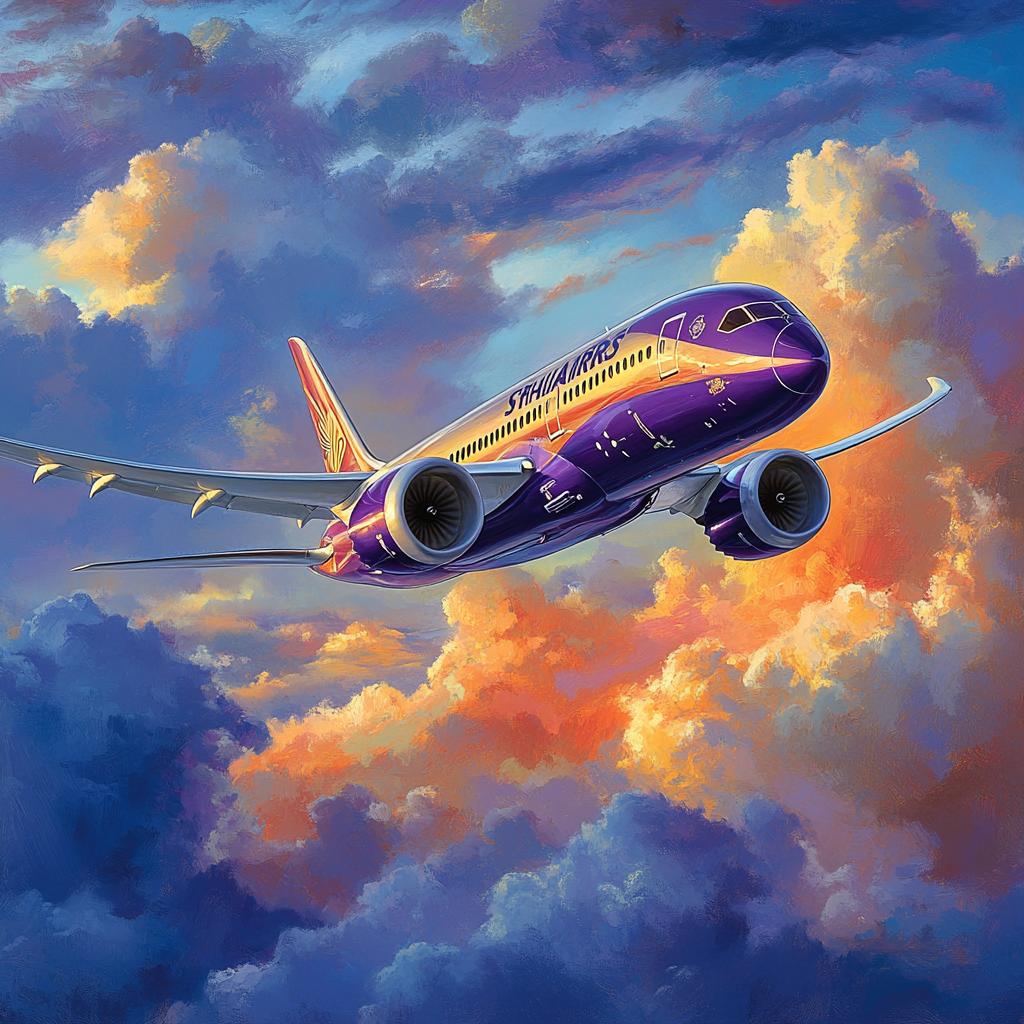In a strategic move poised to amplify its presence across the skies, Thai Airways International (THAI) has mapped out a substantial fleet expansion, set to propel the airline into a new era of aviation excellence. Spearheaded by CEO Chai Eamsiri, this ambitious plan promises not only to modernize THAI’s current fleet but also to fortify Thailand’s diplomatic and trade relations with the United States. Anchoring this endeavor is a monumental agreement to acquire 45 Boeing 787-9 Dreamliners, effectively increasing the airline’s fleet from the current 85 aircraft to a robust 103 by 2026, with projections to soar to 116 by 2027 and an impressive 150 by 2033.
So, why all the excitement about these Dreamliners, you ask? These state-of-the-art aircraft are not just any birds of the sky—they’re the Boeing 787-9 Dreamliners, boasting advanced GEnx engines that whisper promises of efficiency and a smoother, quieter flying experience. The first batch of these aviation marvels is expected to glide into THAI’s hangars in mid-2027, marking the beginning of a decade-long rollout that solidifies this high-flying venture.
Chai Eamsiri elaborated on the strategic underpinnings that make this procurement a linchpin in THAI’s broader operational strategy. “This isn’t just about adding more aircraft; it’s about aligning our growth with the Thai government’s initiative to balance trade with the US,” Chai noted during a conversation with Thansettakij. “Inking this deal at the Singapore Airshow last year was a calculated step, one intended to increase our import of American products and counterbalance the 36% set reciprocal tariff on Thai goods.” A win-win for the skies and commerce, indeed!
But wait, there’s more! To sweeten the deal, Thai Airways isn’t stopping with just these Boeings. The airline’s forward-thinking strategy includes snapping up an additional 35 aircraft through savvy leasing and hire-purchase agreements. This approach isn’t just about boosting fleet numbers; it’s about creating a flexible and responsive fleet strategy that keeps pace with market demands and operational needs.
In today’s world of ever-changing travel destinies, such nimble adaptability will allow THAI to deftly manage routes, trim operating costs, and soar above competition. With eyes set firmly on the horizon, the strategic fleet expansion stands as THAI’s beacon of success in navigating the jetstream of a highly competitive global market.
From the bustling terminals of Suvarnabhumi Airport to soaring high above the Earth, Thai Airways is scripting a compelling storyline of growth and resilience—a narrative where each aircraft added is a new chapter, beckoning us all to take flight into a more interconnected and vibrant future.


















This seems like a great move for Thai Airways! Expanding the fleet will surely help them offer more routes and better services.
While expansion is good in theory, the current economic climate is uncertain. THAI might face challenges when it comes to financing and maintaining such a large fleet. Have they considered that?
Maybe the new aircraft will attract more passengers, helping their financials. Boeing 787-9s are known for efficiency!
Environmentally, is increasing the number of planes really the best move? The carbon emissions are going to be huge!
Good point, EcoWarrior. But I think these new Dreamliners have more efficient engines which might help reduce emissions a bit.
Seems like a strategic move to strengthen ties with the US. But what does this mean for Thai passengers and their ticket prices?
Ticket prices might go down with a bigger fleet and more competition. Increased capacity often leads to better deals for customers.
Hmm, ticket prices often continue to be inflated no matter what. Let’s see how this pans out for the average flyer.
I’m excited about seeing more 787-9s in action. These aircraft are the future of long-haul travel!
Indeed, they are a pilot’s dream, but my concern is whether THAI can truly compete with other airlines in terms of service quality with a sudden fleet increase.
I think they’re aiming for quality too. New planes usually come with better interiors and newer tech for a superior passenger experience.
Corporate growth always trumps environmental concerns. When will we see the airline industry truly commit to greener options?
To be fair, the 787-9 is more fuel-efficient than older models. It’s progress, not perfection.
Still, there’s a long way to go. Call me when planes run on renewable energy.
This expansion reminds me of the airline booms of the past. Hopefully, THAI won’t overextend itself like Pan Am did back in the day.
Good point! Over-expansion without adapting to market demands can indeed lead to a company’s downfall.
Let’s hope they’ve learned from history. It’s a balancing act between ambition and pragmatism.
With international relations so complex, is it safe to rely heavily on deals for fleet modernization?
International politics aside, this seems like a necessary step to stay relevant in the global aviation industry.
I hope the expansion will bring more jobs to local communities around Thai airports!
Good move to balance trade deficits. The US and Thailand can both benefit here, politically and economically.
Indeed, trade deals often come with hidden clauses. I’d like to know the full financial implications THAI is undertaking.
An ambitious vision by Chai Eamsiri; however, I’m curious about the financing and how sustainable this growth is in the long-term.
Remember when flying was about the experience and not just capacity? Those days are long gone it seems!
True, but more planes potentially mean more routes and less waiting time for travelers like me. So, that’s a win in my book!
Fair enough. I suppose it’s just nostalgia talking, haha.